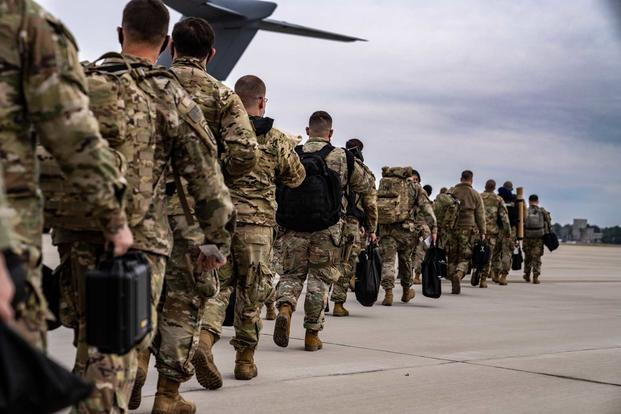
The U.S. military has deployed approximately 130 soldiers and two High Mobility Artillery Rocket Systems (HIMARS) to Shemya Island in the Aleutian chain of western Alaska. This move comes during a recent increase in Russian military aircraft and vessels operating near U.S. territory, coinciding with joint military exercises conducted by Russia and China in the Pacific and Arctic oceans.
Increased Russian Activity
Over the past week, eight Russian military aircraft and four navy vessels, including two submarines, have come close to Alaska. While none of the planes breached U.S. airspace, the Pentagon has acknowledged the heightened activity and is closely monitoring the situation.
“It’s not the first time that we’ve seen the Russians and the Chinese flying, you know, in the vicinity, and that’s something that we obviously closely monitor, and it’s also something that we’re prepared to respond to,” Pentagon spokesperson Maj. Gen. Pat Ryder stated at a news conference.
While NORAD has reported a fluctuation in the number of such incursions annually, with an average of six to seven intercepts per year, last year saw 26 Russian planes entering the Alaska zone, followed by 25 so far this year.
US Military Response
In response to the increased activity, the U.S. military has deployed a guided missile destroyer and a Coast Guard vessel to the western region of Alaska. The deployment of soldiers and HIMARS to Shemya Island, which houses a U.S. Air Force station dating back to World War II, is part of a “force projection operation.”
The U.S. Coast Guard also reported tracking four Russian Federation Navy vessels, including two submarines, a frigate, and a tugboat, operating near Point Hope, Alaska, in the Chukchi Sea. The vessels reportedly crossed the maritime boundary into U.S. waters to avoid sea ice, a practice permitted under international rules and customs.
Political Reactions
U.S. Sen. Dan Sullivan, R-Alaska, has called for a larger military presence in the Aleutians and advocated for a strong response to the actions of Russian President Vladimir Putin and Chinese President Xi Jinping.
“In the past two years, we’ve seen joint Russian-Chinese air and naval exercises off our shores and a Chinese spy balloon floating over our communities,” Sullivan stated in a statement. “These escalating incidents demonstrate the critical role the Arctic plays in great power competition between the U.S., Russia, and China.”
Sullivan also urged the U.S. Navy to reopen its shuttered base at Adak in the Aleutians, which closed in 1997.
While the Pentagon maintains that the recent Russian activity does not pose a direct threat, the increased military presence in the region highlights growing tensions in the Arctic, a strategically important region for both the U.S. and Russia.
Ongoing Monitoring and Assessment
The U.S. military will closely monitor Russian activity in the Arctic and Pacific regions. The deployment of soldiers and advanced weaponry to Shemya Island, along with other military deployments, demonstrate the U.S.’s commitment to defending its interests in the region and deterring potential aggression.
As the Arctic continues to open due to climate change, the competition for resources and strategic control is likely to intensify, leading to further adjustments in military posture and a heightened state of vigilance.
